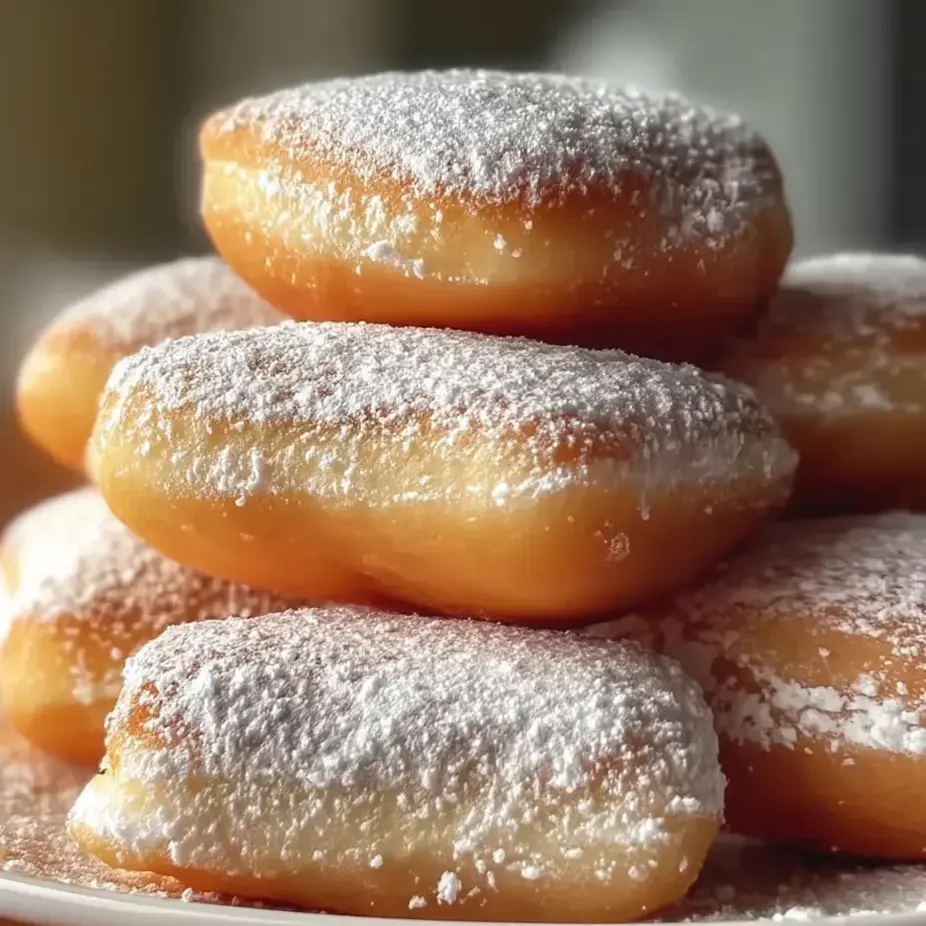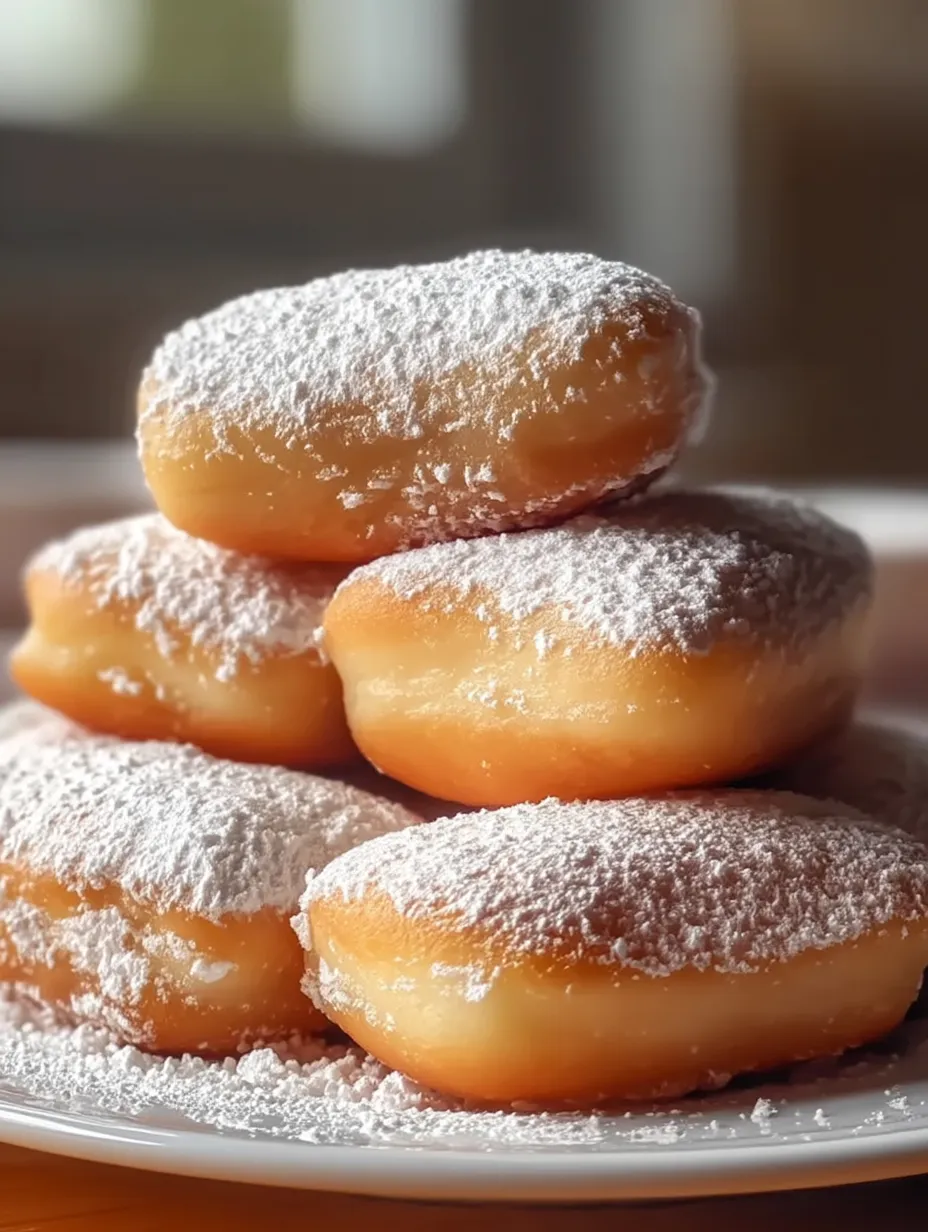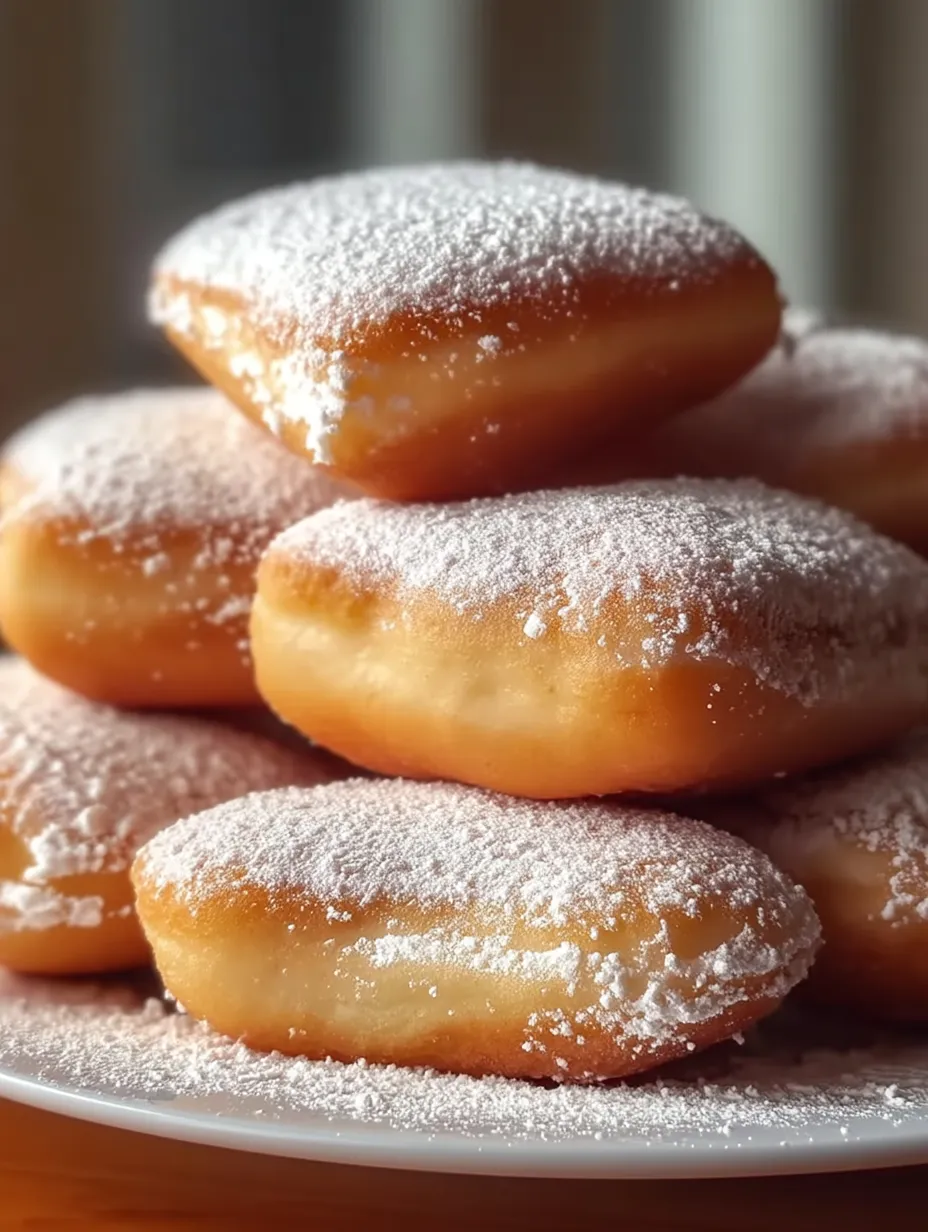 Save
Save
These fluffy homemade vanilla French beignets turn basic kitchen staples into airy, cloud-like treats covered in powdered sugar. The magic happens when vanilla meets yeast, bringing that genuine New Orleans taste straight to your home.
I fell in love with beignets on my New Orleans adventure and have tweaked this approach for years. Now my kids beg for these as weekend morning treats, particularly when we've got family staying with us.
Ingredients
- All purpose flour: Creates the foundation while keeping things soft
- Granulated sugar: Delivers subtle sweetness that doesn't take over
- Active dry yeast: Forms those must-have air bubbles for that puffy texture
- Warm milk: Wakes up the yeast and makes the dough extra rich
- Eggs: Add necessary binding and richness that makes these stand out
- Vanilla extract: Adds lovely aromatic depth to every bite
- Unsalted butter: Brings luxurious texture and helps keep everything tender
- Salt: Brightens all other flavors and cuts through sweetness
- Vegetable oil: Your frying medium needs to handle heat without adding flavor
- Powdered sugar: Don't hold back when coating for that authentic look
Step-by-Step Instructions
- Activate the Yeast:
- Mix warm milk at about 110°F with active dry yeast in a small bowl. Getting this temperature right matters a lot. Too warm kills the yeast, too cool won't wake it up. Let it sit quietly for 5-10 minutes until you notice foamy bubbles on top showing your yeast is ready to work.
- Create the Dough Base:
- Mix flour, sugar, and salt in a big bowl so everything's evenly spread out. Make a hole in the middle and pour in your bubbly yeast mix, eggs, melted butter, and vanilla. Start stirring slowly, then pick up speed until you've got a sticky, rough-looking dough.
- Develop the Gluten:
- Move your dough to a lightly floured counter and knead for 5-7 minutes. This builds structure that gives beignets their special texture. You'll feel it change from rough and sticky to smooth and bouncy. When you poke it, the dough should slowly bounce back.
- First Rise:
- Put your kneaded dough in a greased bowl and cover with a kitchen towel. Find a cozy spot away from drafts and let it sit for 1-1.5 hours. This waiting time builds flavor and texture. You'll know it's ready when it's doubled up in size.
- Shape Your Beignets:
- Gently push down on the puffy dough to release air. Roll it out on a floured surface until it's about half inch thick. Cut into 2x2 inch squares using a sharp knife or pizza cutter. Make clean cuts for even cooking.
- Prepare the Frying Oil:
- Heat your vegetable oil in a heavy pot to exactly 350°F. Don't guess this part, use a thermometer. If it's too cool, your beignets will soak up oil like a sponge. Too hot and they'll burn outside while staying raw inside.
- Fry to Golden Perfection:
- Cook in small groups of 3-4 beignets so they've got room to swim and your oil stays hot. Each one needs 1-2 minutes per side until they turn beautifully golden brown. They should puff up dramatically when they hit the hot oil.
- Finish with Powdered Sugar:
- Drop the fried goodies on paper towels to shed extra oil, then snow them with powdered sugar while they're still warm. The heat helps the sugar stick. Go completely overboard with sugar for that true New Orleans style.

The vanilla really brings out something special in the yeasty flavor. A chef from New Orleans once told me that good quality vanilla makes all the difference. When my grandma tried these for the first time, she shut her eyes and said they took her right back to visiting Louisiana as a kid.
Make Ahead Options
You can get the dough ready the night before and let it slowly rise in your fridge. This overnight chill actually makes them taste more complex and saves you time in the morning. Just pull the dough out about 30 minutes before you start shaping to let it warm up a bit so it's easier to work with.

Perfect Pairings
Most folks enjoy these beignets with café au lait, which is just strong coffee mixed with hot milk. The slight coffee bitterness works so well with the sweet pastries. For something different, try them with hot chocolate or even a sweet dessert wine for fancy evening snacking. A side of tart fruit sauce cuts through the richness nicely.
Cultural Significance
Beignets came to New Orleans with French settlers back in the 1700s and became a key part of Louisiana Creole food. The name "beignet" comes from an old Celtic word "bigne" that means "to raise." They got famous at Café du Monde in the French Quarter, which has been selling them around the clock since 1862. This approach keeps that authentic spirit but works in any kitchen.
Troubleshooting Tips
If your beignets aren't puffing up right, your oil temperature might be going up and down too much. Keep your thermometer in the pot and tweak the heat as you go.
Frequently Asked Cooking Questions
- → How do I know when my dough has risen enough?
Set your dough in a cozy spot, throw a kitchen towel over it, and wait until it's twice as big. This usually takes about 60-90 minutes.
- → What's the top oil choice for frying these?
Go with vegetable oil since it doesn't burn easily and won't change the flavor. Make sure it reaches 350°F for the best results.
- → What's the secret to getting that perfect beignet texture?
Work the dough until it feels smooth in your hands, and don't leave them in the oil too long. They should come out puffy with a nice golden color.
- → Can I make the dough the night before?
You bet! After the first rise, stick it in the fridge. Just let it warm up a bit before you start cooking with it.
- → My yeast mixture isn't bubbling up. What went wrong?
Your milk temperature might be off. It needs to be warm (around 110°F) to wake up the yeast and get it working.
